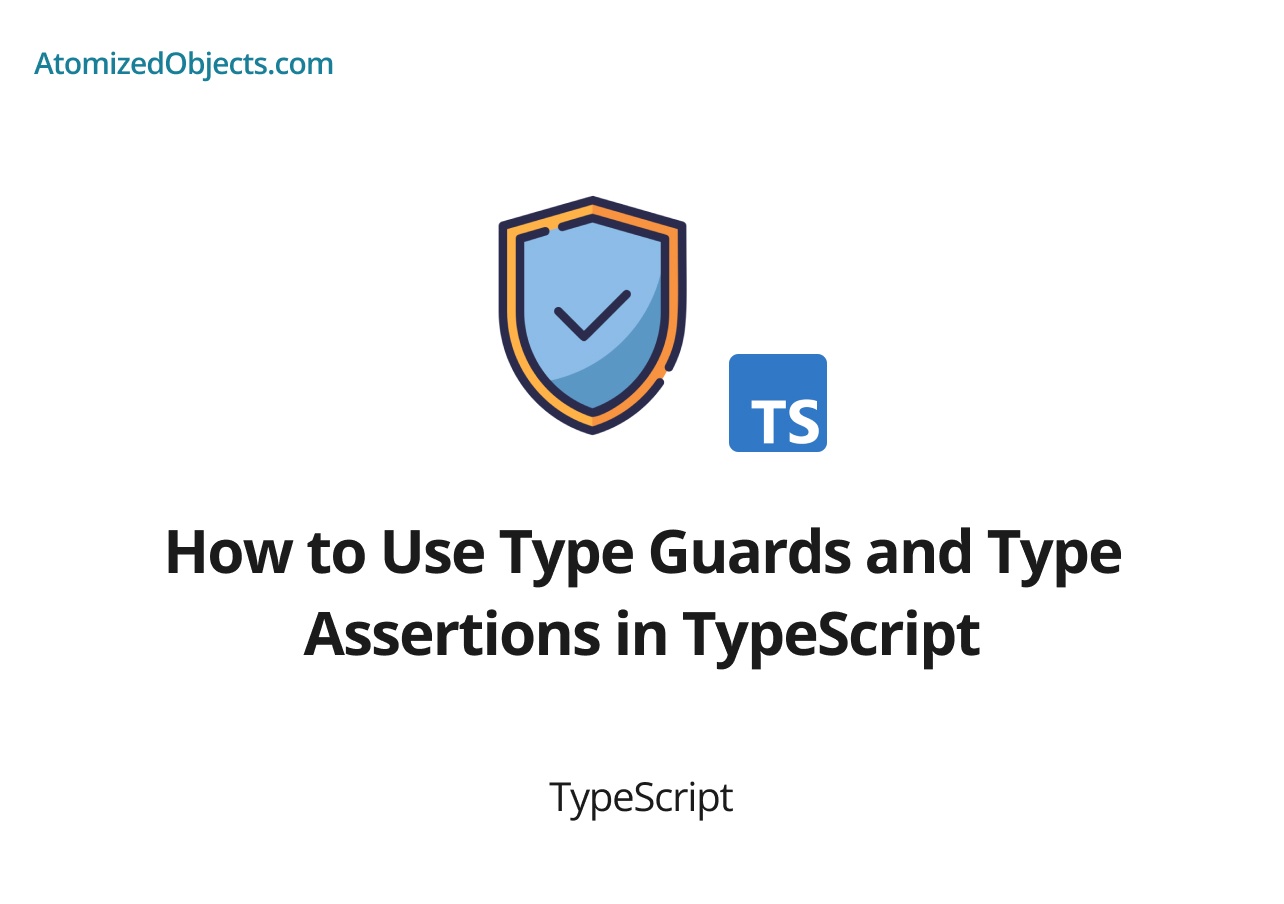TypeScript provides powerful features like type guards and type assertions that allow you to work with complex types and handle dynamic type checks in a more robust and reliable manner. Type guards help you narrow down the type of a value within a conditional block, while type assertions allow you to assert the type of a value when you have more information than the compiler. In this article, we’ll explore how to use type guards and type assertions effectively in TypeScript.
Understanding Type Guards
Type guards in TypeScript allow you to narrow down the type of a value within a conditional block based on a runtime check. They provide a way to make more precise type distinctions and enable the compiler to infer the correct type in subsequent code blocks. There are several ways to implement type guards in TypeScript:
-
typeofType Guard:function logLength(value: string | number) { if (typeof value === "string") { console.log(value.length); // Access string-specific property } else { console.log(value.toFixed(2)); // Access number-specific method } }In this example, the
typeoftype guard is used to check ifvalueis a string. If the check evaluates totrue, the code block within theifstatement is executed with the type narrowed down tostring. -
instanceofType Guard:class Dog { bark() { console.log("Woof!"); } } class Cat { meow() { console.log("Meow!"); } } function makeSound(animal: Dog | Cat) { if (animal instanceof Dog) { animal.bark(); // Access Dog-specific method } else { animal.meow(); // Access Cat-specific method } }In this example, the
instanceoftype guard is used to determine ifanimalis an instance ofDog. If it is, the code block within theifstatement is executed with the type narrowed down toDog. -
User-Defined Type Guard:
interface Fish { swim(): void; } function isFish(animal: any): animal is Fish { return typeof animal.swim === "function"; } function swim(animal: Fish | string) { if (isFish(animal)) { animal.swim(); // Access Fish-specific method } else { console.log("Not a fish!"); } }In this example, a user-defined type guard
isFishis created to determine ifanimalhas aswimmethod. If the type guard returnstrue, the code block within theifstatement is executed with the type narrowed down toFish.
Type guards allow you to handle different types within conditional blocks and perform type-specific operations. They enable the compiler to infer more precise types, ensuring type safety and avoiding runtime errors.
Using Type Assertions
Type assertions in TypeScript allow you to assert the type of a value when you have more information than the compiler. They are similar to type casts in other languages and provide a way to override the default type inference or to work with types that the compiler cannot determine automatically. Type assertions are expressed using the angle bracket (<>) syntax or the as keyword. Here are some examples:
-
Angle Bracket Syntax:
let value: any = "Hello"; let length: number = (value as string).length;In this example, the type assertion
(value as string)is
used to tell the compiler that value should be treated as a string. The resulting length variable is of type number and is assigned the length of the string.
-
asKeyword:let value: any = "Hello"; let length: number = (<string>value).length;This example achieves the same result as the previous one, but with the
askeyword instead of the angle bracket syntax.
Type assertions should be used with caution, as they essentially tell the compiler to trust the developer’s knowledge of the type. Improper use of type assertions can lead to runtime errors if the type assertion doesn’t match the actual type of the value.
Combining Type Guards and Type Assertions
Type guards and type assertions can be used together to achieve more precise type checking and to leverage the strengths of both features. By using type guards to narrow down the type of a value and type assertions to inform the compiler about the specific type, you can work with complex types more confidently. Here’s an example:
interface Car {
brand: string;
startEngine(): void;
}
interface Bicycle {
type: string;
pedal(): void;
}
function isCar(vehicle: Car | Bicycle): vehicle is Car {
return (vehicle as Car).startEngine !== undefined;
}
function drive(vehicle: Car | Bicycle) {
if (isCar(vehicle)) {
vehicle.startEngine(); // Access Car-specific method
} else {
vehicle.pedal(); // Access Bicycle-specific method
}
}In this example, the isCar type guard is used to determine if vehicle is a Car. If it is, the code block within the if statement is executed with the type narrowed down to Car. Type assertions (vehicle as Car) and (vehicle as Bicycle) are used to ensure the compiler understands the specific types being accessed in each code block.
Conclusion
TypeScript provides type guards and type assertions to handle dynamic type checks and to work with complex types more effectively. Type guards enable you to narrow down the type of a value within a conditional block, allowing the compiler to infer more precise types and ensure type safety. Type assertions, on the other hand, provide a way to override the default type inference or to work with types that the compiler cannot determine automatically. By combining type guards and type assertions, you can achieve more precise type checking and confidently handle complex type scenarios in your TypeScript code. Understanding and utilizing type guards and type assertions will improve the reliability and maintainability of your TypeScript applications.
There we have how to Use Type Guards and Type Assertions in TypeScript, if you want more like this be sure to check out some of my other posts!









